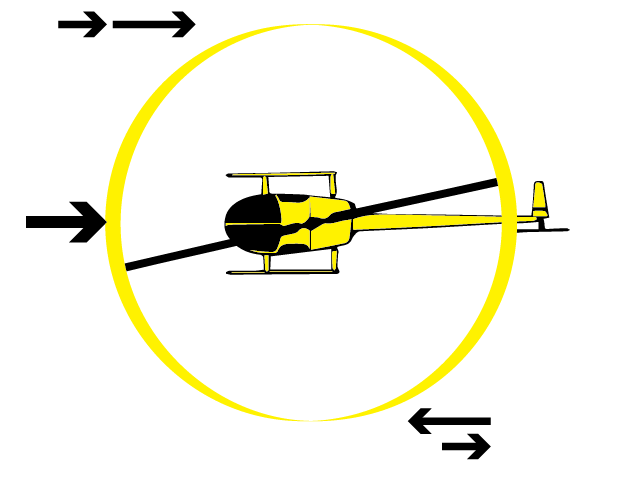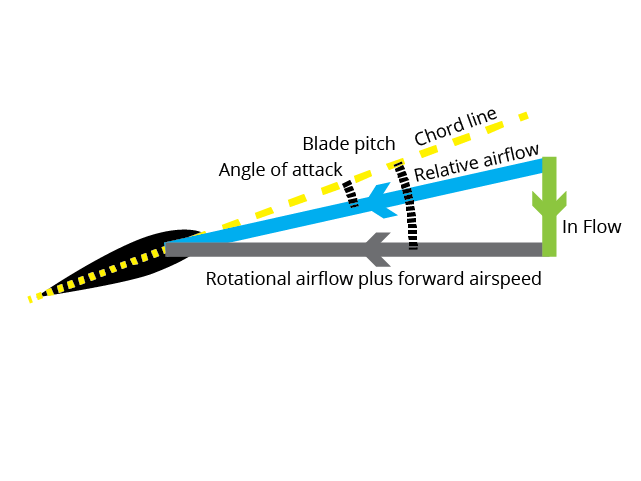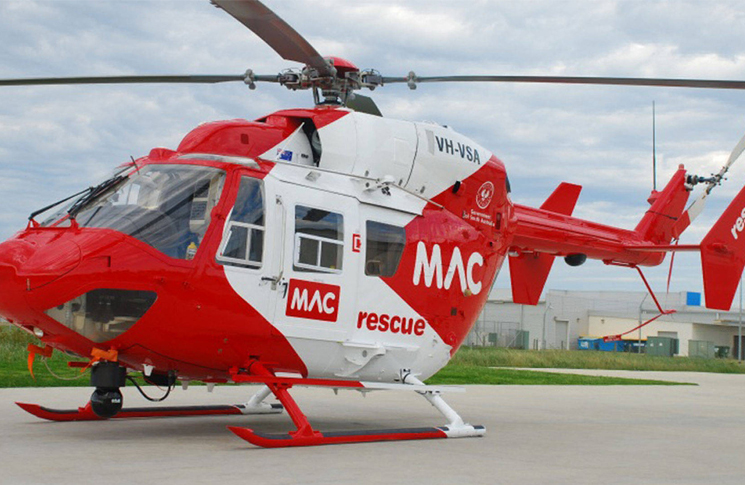Contributor Brendan Reinhardt begins a series on what crews need to know about the distinctive aerodynamics of helicopters. For a start, they stall when flown at high speed.
 By far the greater number of aeroplane accidents are due to precisely the same circumstances that have caused previous accidents. A distressing feature of these accidents is the evidence they afford of the unwillingness, or the inability, of many pilots to profit from the experiences and mistakes of others.
By far the greater number of aeroplane accidents are due to precisely the same circumstances that have caused previous accidents. A distressing feature of these accidents is the evidence they afford of the unwillingness, or the inability, of many pilots to profit from the experiences and mistakes of others.
Gustav Hamel and Charles C. Turner
Flying: Some Practical Experiences, published posthumously in 1914
During a hospital transfer, a BK117 helicopter was cruising at five knots below never exceed speed (VNE) at 5000 feet AMSL (density altitude of 7000 feet), near maximum all up weight and with light to moderate turbulence. The helicopter suddenly and violently pitched nose up. The pilot instinctively applied full forward cyclic with both hands, but this did not arrest the nose up pitch. At about 70 degrees nose up the helicopter then rolled left through 120 degrees and descended rapidly with the pilot applying full rear cyclic which pulled the helicopter out of a near vertical dive. The pilot lost 4000 feet in the recovery and regained level flight 800 feet above the ground. During the recovery the crewman broadcast a mayday with the situation and position. The aircraft diverted to a nearby airfield and shut down.
Most pilots would consider the time for quick reactions and memorised drills to be in the take-off or landing phases of flight where emergencies are more critical being closer to the earth. Close to the earth is where the aircraft is neither safely on the ground nor accelerated to its best speeds. In the humdrum of a routine transit in the cruise any pilot that experienced this event would be surprised at least. It is understandable that this pilot reacted instinctively to the events as they unfolded. The Australian Transport Safety Bureau (ATSB) report listed the cause as retreating blade stall. But how can helicopters possibly stall if they can slow down to a stationary hover? What are the correct actions for retreating blade stall? If the aircraft had been cruising at the next lower hemispherical level of 3000 feet would the outcome have been much worse, or nothing have happened?
Retreating blade stall occurs in high speed forward flight. The advancing blade will see an increase in relative airflow over the disc due to the addition of the aircraft’s forward motion to the rotational speed of the rotor (Figure 1). This will increase lift on the advancing blade and the blade will start to flap up increasing the inflow (Figure 2) reducing the angle of attack and hence lift until the blade is stable again. This is flapping to equality. On the retreating side the blade will see a decrease in relative airflow over the disc due to the subtraction of the aircraft’s forward motion from the rotational speed of the rotor (Figure 1). This will decrease lift and the blade will start to flap down decreasing the inflow (Figure 2) and increasing the angle of attack until the blade is stable again. When the aircraft’s speed is very high the reduction in airflow over the retreating blade can be so great that the blade flapping down can increase the blades local angle of attack (AOA) so much that it exceeds the aerofoils critical angle of attack and the outboard part of the blade stalls.


Why did the aircraft pitch up and roll left? In the first instance, if the retreating blade stalls it produces less lift and will start flapping down. We know from gyroscopic precession that the maximum displacement of the blade will occur 90 degrees in the direction of rotation from where the force is applied. This means that the stalled blade will reach its maximum downward travel at the rear of the aircraft. Similarly, the advancing blade is seeing increased lift and is flapping up. This tilts the rotor disc down at the rear and hence a nose up pitch occurs.
Secondly, as the retreating side of the rotor is stalled it is also producing less lift and so the aircraft rolls towards the retreating side which in this case was to the left. In the case of this incident the instinctive pilot inputs actually would have made the situation worse. Pushing forward on the cyclic aims to create an effect that tilts the disc forward. To do this the retreating blade pitch must be increased to cause the blade to flap up as it goes to the rear (gyroscopic precession) and tilt the disc forward. This will compound the retreating blade stall problem. Further there will be a negative flare effect which will act to slow the rotor RPM (RRPM). The best immediate action is to lower the collective and reduce the blade pitch angle on all blades throughout the disc and thereby un-stall the retreating blade.
There are other factors that can make the retreating blade more susceptible to stall. If the aircraft is heavy then more blade pitch and hence AOA is required to lift the heavier aircraft and so a heavy aircraft will more susceptible to retreating blade stall. If the RRPM decreases due to inattentive throttle manipulation then the rotational airflow will decrease, and this will result in even less lift on the retreating blade, greater flap down and increased AOA. High density altitudes require more blade pitch and hence AOA to produce lift putting the retreating blade closer to the critical angle. Manoeuvring requires increased blade pitch and changes the inflow which can again put the retreating blade closer to the critical angle. A roll to the left in this case would reduce the inflow of the retreating blade increasing the AOA.
Turbulence will result in gusts which the blades will see as increased forward speed and variations in inflow. This will result in periods of increased AOA on the retreating blade. Retreating blade stall often sets the Vne for helicopters and you can see this often where the helicopter VNE decreases as the density altitude increases. Low frequency vibrations from the unstable airflow over the retreating blade are often a warning that retreating blade stall is not far away.
Recovery from retreating blade stall must address the causes of reaching the critical angle on the retreating blade. A generic checklist action if retreating blade stall is encountered in priority order would look something like:
Reduce collective—to reduce all blade pitch and keep retreating blade AOA less than the critical angle.
Decrease severity of the manoeuvre—to ensure changes in inflow due to roll do not increase the retreating blade AOA to the critical angle.
Decrease airspeed—to ensure the retreating blade does not lose so much resultant airflow that the blade flaps excessively and the AOA approaches the critical angle.
Rotor RPM—confirm it hasn’t reduced and made the retreating blade more susceptible to reduction in lift from the addition of the rotational airflow vector and forward speed vector.
Descend to lower altitude—to reduce all blade pitch angles and keep the retreating blade AOA less than the critical angle.
The BK117 has what can be considered a rigid rotor. This gives the helicopter a lot of control authority as the blades are stiff in the flapping plane. The downside is when a large lift imbalance occurs across a rigid rotor that has a lot of control authority, the pitch-up and roll towards the retreating side is going to be sudden.
In the incident report there is mention of two previous incidents in Australia where retreating blade stall occurred on BK117 helicopters. The most recent incident occurred eight years. CASA had previously provided advice on operating the BK117 in high-density altitude and atmospheric turbulence, especially if the aircraft was at high gross weight, that pilots needed to reduce airspeed and torque settings while hand flying the aircraft with the stability augmentation system (SAS) mode engaged. The manufacturer provided updated guidance five years before the incident on flying near VNE in gusty weather (including confirming correct longitudinal cyclic rigging) which stated that if the helicopter is flown beyond or, in case of strong gusts, close to the admissible maximum speed, this can lead to retreating blade stall and thus cause a sudden pitch up. In the flight manual, the Vne table only applies to calm weather and that the speed must be correspondingly reduced when the weather is gusty. In the event of an uncommanded pitch up the pilot must immediately lower the collective to lower the angle of attack and increase the airspeed on the retreating blade, thereby returning control to the aircraft.
Retreating blade stall is not the sole domain of rigid rotors and can occur in both teetering and fully articulated rotor systems. Recovery from retreating blade stall is not often an emergency checklist item in all helicopter manuals. Similarly, recovery from a fixed wing stall is more a generic technique that all fixed wing pilots cover in basic training and not a specific checklist either. The recovery actions listed above treat the likely causes to enable a quick recovery. As with fixed wing stalls the more prudent action is to understand what causes retreating blade stall and operate the aircraft to avoid such a situation.
There are few new ways to have an aircraft accident. As the leading quote indicates, learning the lessons from the past is critical to ensure that its tragedies are not repeated. In this case, the aircraft operator was not using the BK117 at the time the CASA updates and manufacturer guidance were issued. It appears important operational information was not passed on and lay dormant, becoming a latent failure.
There is a quiz in this month’s edition of Flight Safety Australia that covers some of the concepts covered in this article should you wish to test your understanding.
Mention needs also to be made of the actions of the aircrew member who made a mayday call with position and situation. We would all like to think that under pressure we would have the presence of mind to put a little distance into the 60 seconds of what must have been a most unforgiving minute.



Comments are closed.